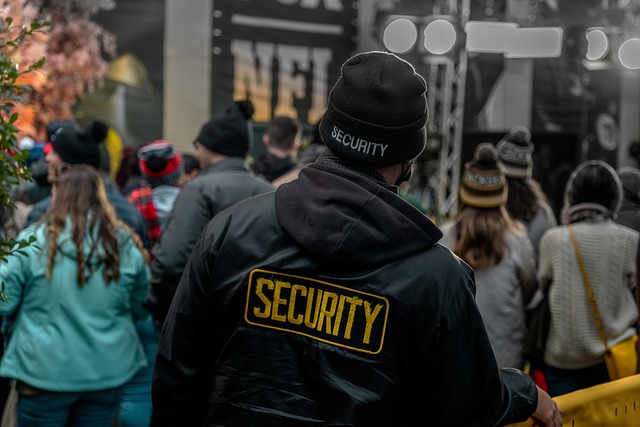Political figures face diverse security threats, from physical harm to online harassment and cyberattacks. Effective protective services require understanding these risks, assessing public schedules and locations, identifying high-risk areas, and implementing tailored strategies like heightened event security, close protection, and advanced cybersecurity. Key elements include thorough risk assessments, specialized protective measures, travel risk mitigation, and regular training sessions. Advanced Threat Assessment (ATA) using cutting-edge technology identifies potential threats, leading to customized mitigation strategies that combine robust physical security and digital safeguards. Technology, such as real-time video monitoring and facial recognition software, enhances proactive risk identification and swift responses, boosting public confidence in protective measures for political campaigns and events.
In the spotlight, political figures face unique security challenges. Understanding these threats is paramount for effective protective services, especially during campaigns and public appearances. This article explores tailored security plans designed to safeguard political entities from potential risks. We delve into essential components, from threat assessment to technology integration, offering insights on protecting figures in the public eye. By examining planning strategies and advanced mitigation techniques, this guide provides a comprehensive overview for enhancing political security.
Understanding the Unique Threats to Political Figures
Political figures, due to their public profiles and positions, often face unique security challenges. Protective services for political figures need to consider a range of potential threats, from physical harm during public appearances and campaign events to online harassment and sophisticated cyberattacks. These risks can stem from various sources, including disgruntled supporters, hostile groups, or even state-sponsored actors.
Understanding these threats is paramount in developing effective security plans. It involves assessing the candidate’s or leader’s public schedule, identifying high-risk areas, and implementing tailored strategies. This may include heightened security at rallies and debates, close protection for individuals, and advanced cybersecurity measures to safeguard sensitive information and communication channels. Effective protective services stay one step ahead by anticipating risks and continually adapting plans based on evolving threat landscapes.
Components of a Tailored Security Plan
When crafting a tailored security plan for political campaigns and public appearances, several key components must be considered to ensure the safety and protection of political figures. The first involves an in-depth risk assessment that identifies potential threats, from physical harm to online harassment. This includes analyzing past security incidents, understanding the campaign’s or event’s unique context, and considering the candidate’s personal security profile.
Next, the plan should detail specific protective services for political figures. This may involve a dedicated security team, visible and invisible surveillance, emergency response strategies, and communication protocols between various stakeholders. Additionally, it must incorporate measures to mitigate risks during travel, such as securing transportation and accommodation. Effective planning also entails regular updates and drills to ensure everyone involved is prepared for any eventuality.
Protecting Public Appearances: From Planning to Execution
Protecting public appearances is a critical aspect of any political campaign or event, ensuring the safety and security of key figures. It involves meticulous planning and coordination to mitigate potential risks and threats. Protective services for political figures must consider various scenarios, from high-profile rallies and debates to more intimate town hall meetings.
During the execution phase, a dedicated team employs strategies such as crowd control, access management, and advanced surveillance to safeguard candidates and public figures. Effective communication between security personnel, campaign staff, and local authorities is vital to ensure a seamless and secure experience for all participants, allowing political campaigns to focus on their mission while maintaining a robust safety net.
Advanced Threat Assessment and Mitigation Strategies
In the high-stakes world of politics, ensuring the safety and security of public figures is paramount. Advanced Threat Assessment (ATA) forms the cornerstone of comprehensive protective services for political candidates and leaders during campaigns and public appearances. This meticulous process involves analyzing potential risks, identifying vulnerabilities, and developing tailored strategies to mitigate various threats, from physical harm to cyberattacks. By leveraging cutting-edge technology, intelligence gathering, and risk modeling, security teams can anticipate and prepare for a wide range of scenarios.
Mitigation strategies are then customized based on the assessed risks, employing a multi-layered approach. This includes physical protection, such as close personal security detail and secure transportation, coupled with digital safeguards like advanced cybersecurity protocols and monitoring of online activities. Such proactive measures not only safeguard political figures but also help maintain public trust and ensure the integrity of democratic processes, demonstrating the evolving nature of protective services for political figures in today’s complex environment.
Role of Technology in Enhancing Political Security
In today’s digital era, technology plays a pivotal role in enhancing the security of political campaigns and public appearances. Advanced surveillance systems, including real-time video monitoring and facial recognition software, allow protective services for political figures to proactively identify potential threats. These tools enable efficient navigation through bustling events, ensuring swift response times and enhanced overall safety.
Furthermore, data analytics and intelligence gathering have become indispensable for tailoring comprehensive security plans. By leveraging social media and open-source information, security teams can predict and mitigate risks more effectively. This technological edge not only protects political figures but also instills confidence in the public, showcasing a robust and responsive protective services infrastructure.
In ensuring the safety and security of political figures, a comprehensive tailored security plan is indispensable. By integrating advanced threat assessment, cutting-edge technology, and meticulous planning, protective services for political figures can effectively mitigate risks during public appearances. From understanding unique threats to leveraging technological advancements, these strategies foster a robust security framework. As political campaigns and high-profile events continue to evolve, this adaptable approach guarantees the resilience of our democratic processes and the safety of those who shape our future.
